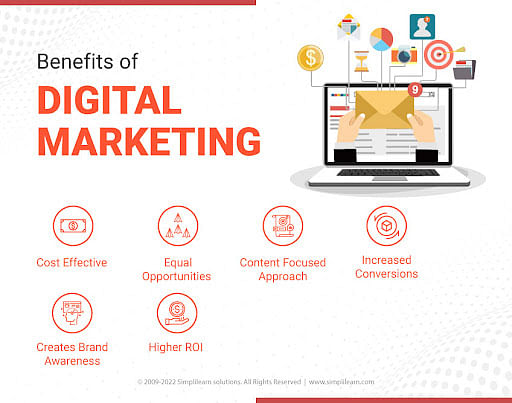Enhance Individual Experience and Drive Traffic With Responsive Internet Style
In today's electronic landscape, where users are accessing sites from a multitude of devices, receptive internet design has come to be much more essential than ever before. With its capacity to adapt and perfectly adjust to different display sizes, receptive design not just boosts individual experience yet also drives traffic to your internet site.
Why Responsive Website Design Issues
Responsive website design is an essential element of modern-day internet development as a result of its capability to guarantee optimum customer experience across numerous devices and screen sizes. With the spreading of smartphones, tablet computers, and other smart phones, it has actually come to be crucial for web sites to adapt and supply seamless functionality regardless of the gadget being used.
The primary factor why receptive website design matters is that it allows users to have a consistent and pleasurable searching experience, no matter of the gadget they are utilizing. A receptive site immediately changes its format, style, and content elements to fit the display dimension and resolution of the tool, ensuring that individuals can quickly browse and connect with the site without any kind of inconvenience or frustration.
Moreover, receptive internet design additionally plays a substantial function in search engine optimization (SEARCH ENGINE OPTIMIZATION) Browse engines, such as Google, focus on internet sites that are mobile-friendly and responsive in their search outcomes. By incorporating receptive layout principles, websites can improve their exposure and ranking, causing boosted natural web traffic and potential consumers.

Boosting Individual Interaction Through Responsive Style
Maximizing customer involvement is an essential objective of receptive layout, as it guarantees that users can easily gain access to and communicate with website web content on any type of gadget. With the boosting use tablets and smartphones, it is vital for web sites to adjust to various screen sizes and resolutions. Receptive design allows internet sites to automatically adjust their layout and web content to offer a smooth user experience across tools.
Among the primary ways receptive design boosts individual involvement is by decreasing lots times. With a receptive web site, users do not have to wait for different mobile variations to tons, resulting in faster accessibility to material. This improved speed causes higher customer complete satisfaction and encourages them to spend even more time on the site.
In addition, receptive style enhances customer interaction by improving navigation and customer interface (The Ad Firm Web Design). When a site is developed responsively, menus and switches are maximized for touch communications, making it easier for users to navigate and communicate with the website on their smart phones. This straightforward and user-friendly experience keeps users engaged and motivates them to check out more of the internet site
Moreover, receptive layout enables better web content visibility and readability. By adapting the format and typeface dimensions to various gadgets, receptive internet sites guarantee that individuals can conveniently review and understand the web content. This improves user interaction by lowering the need for zooming or scrolling to review the message.
Boosting Website Traffic With Responsive Website Design
With the expanding popularity of mobile phones, having a web site that is receptive to various screen sizes and resolutions is essential for driving enhanced web traffic. In today's electronic landscape, users are accessing internet sites from a range of tools such as smartphones, tablets, and desktop computer computers. Each of these tools has different screen dimensions and resolutions, and if your website is not created to adapt to these variations, it can result in a poor user experience and a loss of possible web traffic.
Receptive web layout guarantees that your website looks and functions ideally across all gadgets. By utilizing flexible grids, fluid photos, and media queries, responsive style enables your internet site to instantly adjust its content, layout, and navigation to fit any kind of display size. This means that customers will certainly have a smooth browsing experience despite whether they are utilizing a small mobile phone or a big desktop computer computer system.
Key Components of Effective Responsive Layout
Efficient receptive layout integrates numerous crucial elements that ensure a smooth individual experience across different gadgets. This allows material to be presented in a legible and visually attractive fashion on any device.
An additional essential component is media questions. These allow designers to use different designs and use this link formats based on the features of the user's tool, such as display dimension and orientation. By utilizing media inquiries, developers can enhance the discussion of web content for every gadget, ensuring that it is easily accessible and legible.
Receptive images are also crucial in efficient receptive style. Photos that are also huge can decrease web page load times on mobile phones, while photos that are also small might show up pixelated on bigger displays. By making use of strategies such as receptive photo resizing and careless loading, developers can guarantee that pictures are appropriately sized and enhanced for each and every gadget.
Finally, effective receptive style includes a mobile-first method. This means focusing on and creating web content for smart phones initially, and after that boosting browse this site the layout and broadening for bigger displays. This technique ensures that one of the most essential content is quickly obtainable on smaller sized displays, while still offering an abundant experience on larger tools.
Ideal Practices for Applying Receptive Website Design
Executing receptive web layout requires mindful consideration of different ideal methods to ensure an ideal individual experience throughout different devices. Below are some crucial ideal practices to comply with when carrying out receptive website design.
To start with, it is critical to prioritize mobile individuals. With the increasing dominance of smart phones, designing for mobile-first has actually become vital. Begin deliberately for smaller screens and after that progressively improve the layout for larger screens.

One more essential ideal practice is to maximize images for various display resolutions. Large photos can slow down the loading time of your internet site, specifically on smart phones with slower connections. Usage receptive pictures that can be resized based on the device's screen resolution to boost efficiency.
Furthermore, test your website on different tools and display dimensions to make certain a smooth and consistent experience. There are various screening tools offered that can aid you identify any kind of issues check and make needed adjustments.
Finally, prioritize functionality and accessibility. Ensure that your site is easy to browse, with succinct and clear content. Make certain that your web site comes to people with handicaps and complies with ease of access standards.
Final Thought
In verdict, receptive website design plays an essential function in improving individual experience and driving web traffic to internet sites. By embracing responsive layout concepts, internet sites can ensure ideal viewing experiences throughout different tools, causing enhanced user involvement (Web Design). Responsive layout can also add to greater internet site traffic as it enhances search engine rankings and assists in very easy sharing of web content. Consequently, organizations must concentrate on implementing the vital elements and ideal practices of receptive layout to effectively fulfill the demands of modern individuals.
Optimizing individual engagement is a vital objective of responsive style, as it ensures that customers can quickly gain access to and interact with site web content on any type of tool. Receptive style allows sites to instantly readjust their layout and material to provide a smooth individual experience throughout devices.
Furthermore, receptive style improves individual interaction by enhancing navigation and individual interface.Receptive images are also essential in reliable responsive design. By embracing receptive design principles, web sites can ensure optimal seeing experiences across various tools, leading to boosted individual involvement.
Comments on “Discover the Limitless Potential of Web Design: Igniting Digital Development”